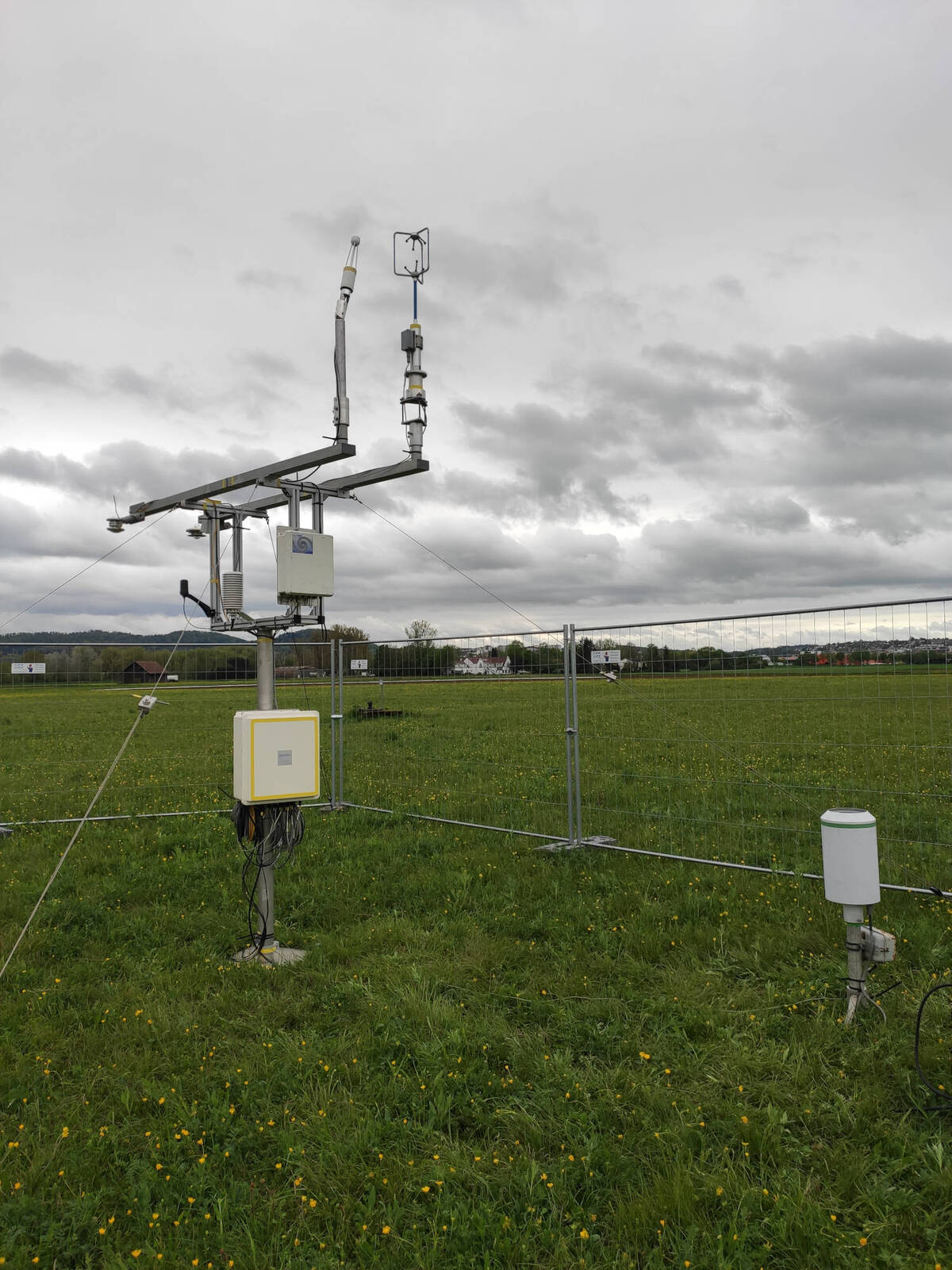Energy balance station
Measurement station for the near-surface energy balance
The energy balance of the Earth's surface is a key parameter for exchange processes between the Earth's surface and the atmosphere. To capture its components and other meteorological variables, various devices are combined to form a measuring platform (Fig. 1). In addition to meteorological variables such as air temperature, air pressure, air humidity precipitation, wind speed and wind direction, these include long-wave and short-wave radiation flux densities, surface temperature, soil heat flux, soil moisture and soil temperature at four depths (Fig. 2). In addition, the station allows the determination of turbulent fluxes of momentum, sensible and latent heat.
| Equipment of the energy balance station | |||||
| Number of sensors | Device | Type | Manufacturer | Measured quantities | Sensor height |
| 1 | Ultrasonic anemometer | Windmaster | Gill | wind vector, temperature, momentum flux, sensible heat flux | 4 m |
| 1 | Barometer | 61402V | Young | air pressure | 1 m |
| 1 | Pyranometer | CM14 | Kipp & Zonen | global- and reflected shortwave radiation | 3 m |
| 1 | Pyrgeometer | CGR3 | Kipp & Zonen | longwave downwelling radiation, longwave upwelling radiation | 3 m |
| 3 | Soil heat flux plates | HFP01SC | Hukseflux | soil heat flux | -0.05 m |
| 1 | Radiation thermometer | KT15 | Heimann | surface near temperature | |
| 1 | Temperature and humidity sensor | HMP35A / HMP155 | Vaisala | air temperature, relative humidity | 3 m |
| 1 | Inclinometer |
LEC 315-232 |
BWSENSING |
elevation angle | 4 m |
| 1 | Ombrometer | 52202 | Young | precipitation | 1 m |
| 4 | SISOMOP | SMT100 | soil temperature, soil humidity | -0.05, -0.1, -0.2, -0.5 m | |
| 1 | Humidity and carbon monoxide sensor | Li-Cor 7500 | LI-COR | CO2 / H20, latent heat flux, CO2 flux | 4 m |


